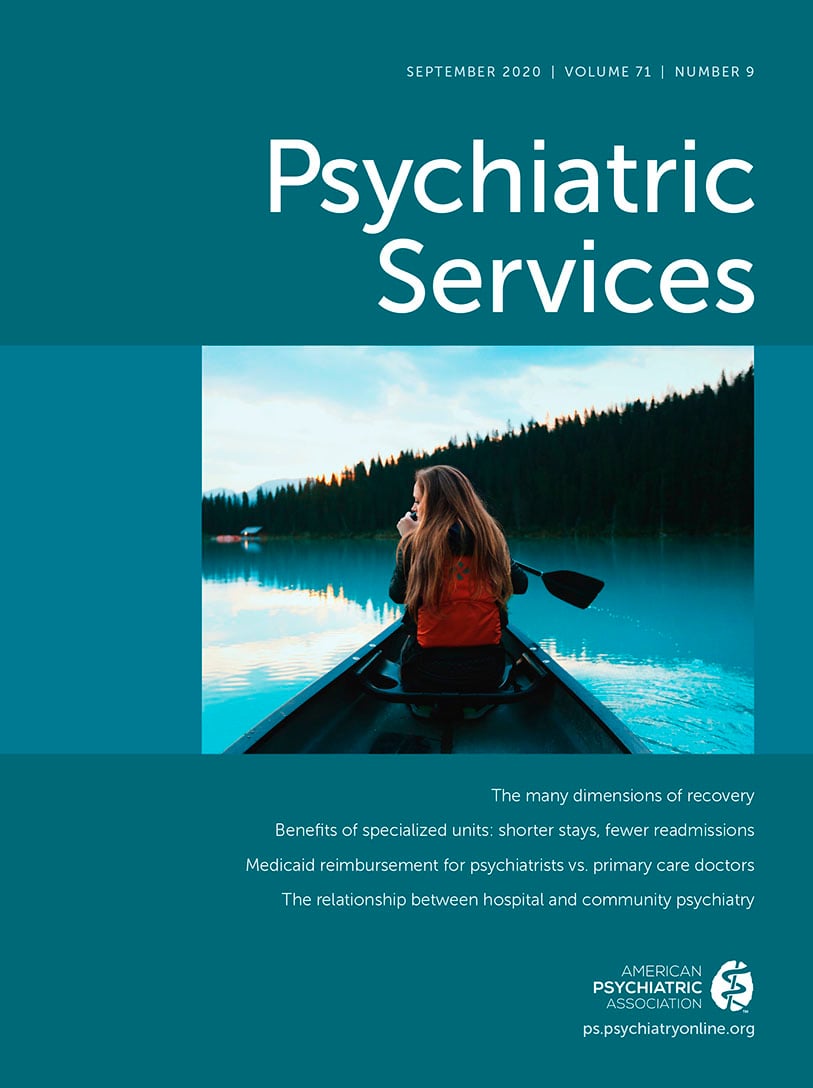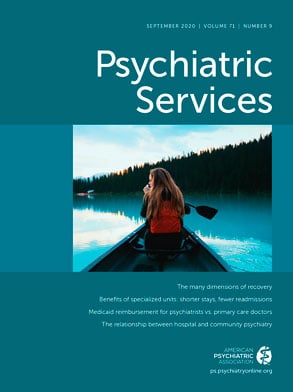Dr. Perera (1) challenges the notion that countries with resources for and commitments to enhancing mental health services should expect to decrease inpatient services as they expand community-based services for these conditions. Her research suggests the opposite: community care and inpatient services are complementary and expand together in mature systems—it’s not a zero-sum game. Dr. Perera notes that “achieving a top policy priority—a robust community care system—requires the destigmatization of the mental hospital.” Two key questions arise: Exactly how do hospital and community care relate to each other in expanding systems? and Why does inpatient care carry the stigma of undesired or failed care?
How Hospital and Community-Based Care Relate to Each Other
Dr. Perera (
1) is correct to note that more research is needed to determine whether and why hospital and community-based care are positively correlated. One assumption is that the association between hospital and community-based care is unidirectional and that larger hospital services promote more community care. Dr. Perera describes how hospitals may use financial levers or their role as a gateway to care when coordinating expansion of community-based services. This pathway to expansion of community-based services is logical given the prominent historic role played by hospitals but would work only in health care systems that fund mental health services sufficiently to support expansion, a rare phenomenon in the countries studied.
Dr. Perera notes that the opposite causal pathway may exist—i.e., that expansion of community-based care promotes growth of hospital services. This notion is not as intuitive, given the well-documented trend of decreasing hospital beds over the past century, but makes sense when considering the different roles of inpatient asylums from the past century compared with modern acute care hospital units. Asylum care has been largely eliminated from robust, modern health care systems, and community-based services that improve awareness of and access to mental health care should lead to more people being identified and referred for care, including those who will need acute care, hence the need for expanding hospital services.
There is also evidence that other factors independently affect hospital and community-based care. One example includes countries’ approaches to forensic mental health. In some countries, hospital bed closures have been associated with increases in involuntary admissions, leading to a deinstitutionalization-reinstitutionalization cycle and subsequent expansion of forensic hospital services (
2). Expansion of social services and new payment schemes for mental health services have also affected both hospital and community-based care. Creation of the Medicaid program in the United States allowed for significant expansion of community hospital care during the same period that state-operated asylums were closing. These interrelationships are complex, and further research is needed to disentangle cause and effect.
The Stigma of Inpatient Mental Health Care
Why is inpatient mental health care such a bad thing? Clearly, acute hospital care for any reason is something everyone hopes to avoid. However, inpatient mental health care is almost always viewed as a failure of some sort—failure of the outpatient team to identify a crisis and intervene in a timely manner, failure of the patient to adhere to treatment recommendations, or failure of the family to appropriately monitor the patient. Modern society does not view inpatient care for cardiovascular disease or cancer as reflecting a failure of care, so why view hospital mental health care that way? The answer is complex, but the seeds were likely planted with the widespread acknowledgment several decades ago of the failure of long-term inpatient care models to effectively treat mental illness. This acknowledgment, combined with the introduction of recovery models, justified efforts to dramatically reduce asylum hospital care beginning in the mid-20th century. Some countries used those savings to expand community care, whereas others did not.
The notion that hospital care does not help individuals with mental illness persists, most notably in approaches to and models for funding hospital mental health care. Third-party payers, including managed care organizations in the United States, assumed important roles in overseeing and paying for mental health care by the end of the 20th century. These entities adopted the prevailing belief that hospital care should be restricted to the minimum “medically necessary” to ensure safety and allow patients to be discharged to the community. This approach has been extremely effective at managing costs for mental health care (
3).
But have we gone too far? Efforts to reduce hospital stays and save money have led to systems with markedly limited access to hospital care and to overcrowded emergency rooms. Mental health 30-day readmission rates are significantly higher than all-cause readmission rates (
4), and increasing numbers of “revolving door” patients fail to successfully transition to community care (
5). Hospital care now often fails everyone—payers can find no more savings, hospitals are losing money, clinicians are burned out, and, most important, patients and their families are not receiving the care and support they deserve.
Large and robust health care systems must continuously evolve, and the current state of mental health care systems presents an important opportunity for societies and health care systems to reexamine what they need and want from mental health hospital care. In the United States, a renewed emphasis on mental health parity provides further impetus for such a reexamination. To be clear—I am not advocating for a return to asylum care. That model failed society, patients, and patients’ families. And many more effective somatic and psychosocial treatments are now available. I am also not advocating for new efforts to increase hospital inpatient beds; robust systems likely have enough beds if they are used optimally.
Hospital mental health care should be redefined by using the same perspective as hospital care for other medical conditions: this care should involve the most sophisticated approaches and interventions for managing acute exacerbations of mental illnesses. These include interventions that are rarely used but require careful medical monitoring, such as electroconvulsive therapy, but also include complex psychopharmacological treatments and intensive psychosocial interventions that cannot be safely delivered in a timely manner in outpatient settings. There should be greater specialization, with hospital units dedicated to treatment of children and adolescents and of patients with conditions requiring focused expertise, such as eating disorders, co-occurring substance use, and developmental disabilities. Hospital care for general medical conditions includes acute rehabilitation units for patients needing 2–4 weeks of continued stabilization after acute inpatient care and before returning to care within their communities. This service is largely nonexistent and greatly needed for mental health conditions. Third-party payers should end expensive hospital utilization review practices that apply generic medical necessity criteria to determine when an individual patient’s acute care should end, with minimal regard for complex psychosocial and social determinants that greatly influence treatment response and stabilization. Staff who review third-party utilization should instead focus their efforts on identifying high-need patients and ensuring that they receive the assessments, treatment, and care coordination necessary during a hospital stay to optimize the likelihood of successful transition to community care.

